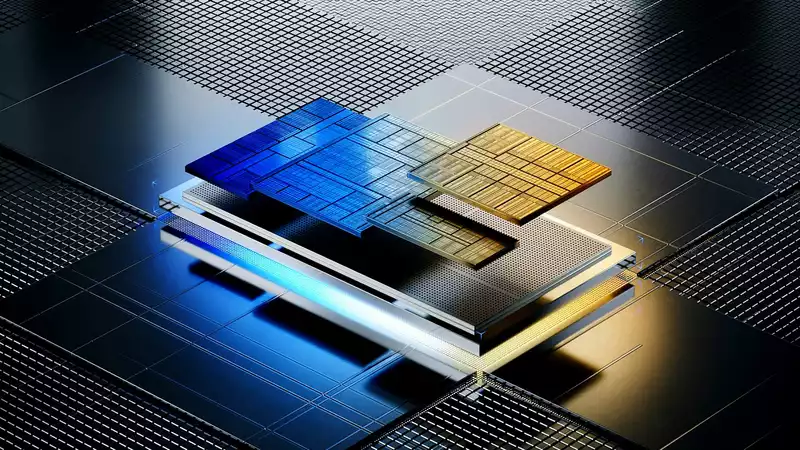This year's CES was a constant buzz and hype around AI, and Intel's client computing keynote was no different. But Executive Vice President Michel Holthaus said that Intel's next CPU architecture for desktop PCs, codenamed Arrow Lake, is scheduled to hit the market in late 2024. And it is also "the world's first gaming processor with an AI accelerator."
Unfortunately, little else was said about Intel's 15th generation desktop chips, but we already know a few things about their design. The most important of these is that it is an extension of the latest Meteor Lake design, where multiple tiles (compute, graphics, SoC, IO) are housed together in a Foveros packaging system.
This is a bit similar to the chiplet approach of AMD's desktop Ryzen, Threadripper, and EPYC models, where the chips are physically separated within the CPU package; with Foveros, all tiles are stacked on a common layer to shorten the length of the various chip interconnects.
Arrow Lake is also expected to be the first commercial product to be manufactured using Intel's 20A process node. This will involve a major change in silicon chip manufacturing, switching from the FinFET (field-effect transistor) design used for the past decade to a GaaFET (gate-all-around) architecture that Intel has named RibbonFET.
Other newcomers include PowerVia, also known as backside power delivery. This separates all input/output signal connections and power lines, applying the latter to the backside of the wafer. This should allow the chip to operate at a slightly higher clock speed and significantly reduce the level of internal voltage drop.
TMSC and Samsung plan to join the GaaFET and backside power feeding bandwagon at some point later this year or in 2025.
Unfortunately, not much else is known about Arrow Lake, but we can speculate on a few things: the Meteor Lake CPUs currently have 6 P-cores and 8 E-cores, while Arrow Lake will have 8 P-cores and 16 E-cores launched and will probably offer more configurations as time goes on. We also expect the graphics tiles to be larger than Meteor Lake, with more shaders, or perhaps a new architecture.
Intel was talking about AI acceleration at the CES event; in Meteor Lake, the SoC tiles will have NPUs (neural processing units) to specifically handle the computation and data formats associated with machine learning operations.
Arrow Lake will of course also have an NPU, but what about the claim of being "the world's first gaming processor with an AI accelerator"? The new Core Ultra series chips are definitely an Intel first, since they are not intended for gaming PCs, but AMD got there first with its new Ryzen 7 8700G processor, so we can say it is not a world first.
This too will be announced at CES and should be available for purchase by the end of January; one could pedantically argue that the 8700G is "just" an APU, but there is only one reason to put as large a GPU as possible in a CPU.
Marketing shenanigans aside, I am genuinely looking forward to seeing what Arrow Lake is all about, especially what advantages (if any) Intel's 20A process node will bring. Current 14th generation desktop CPUs are by far the most powerful, but very power hungry. If this last aspect can be solved with the new process node, Intel could have a monstrous gaming chip on its hands.


Comments